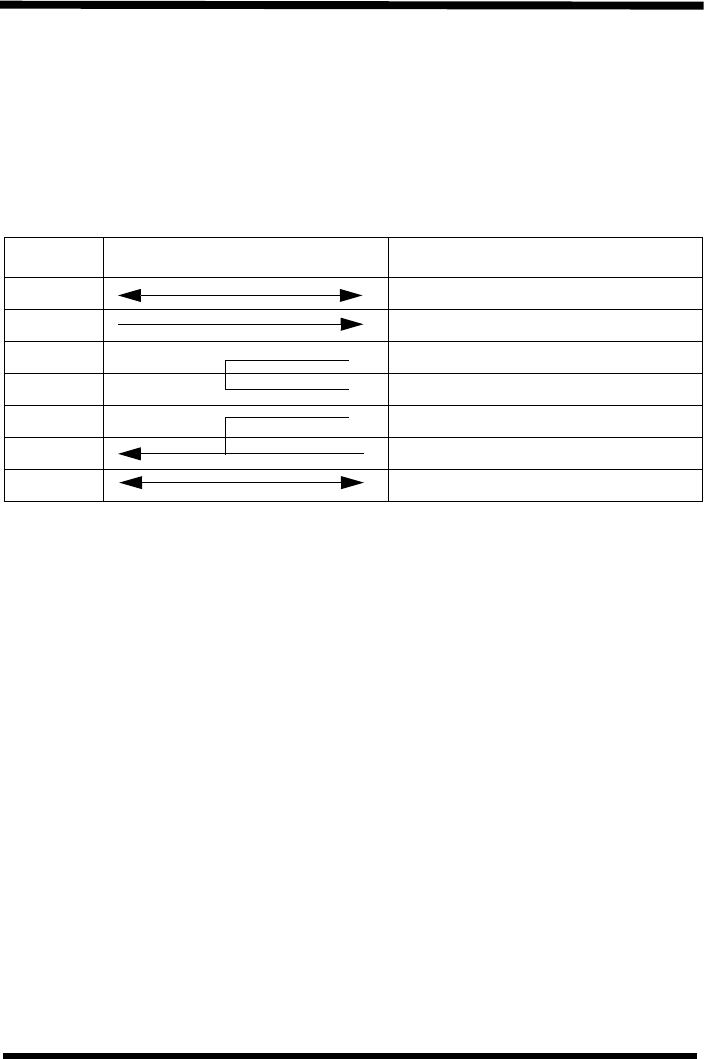
174 SATO RISC Printers
5. Interface Specifications Programming Manual
Ready/Busy Flow Control
Ready/Busy is the hardware flow control for the serial interface on the
printer. By raising/lowering the voltage level on Pin 20 of the RS232 port,
the printer notifies the host when it is ready to receive data. Pin 4 (RTS)
and Pin 20 (DTR) are the important signals on the printer for this method
of flow control. The host must be capable of supporting this flow control
method for it to function properly.
Cable Requirements
* This connection at the host side of the interface would depend upon the
pin that is being used as the Ready/Busy signal by the driving software.
TypicallyonaPC,itwouldbeeitherCTS(pin5)orDSR(pin6)onaDB-
25 connector.
Data Streams
Once the flow control method has been chosen for the RS232C interface,
the data stream must be sent in a specific manner. The STX and ETX con-
trol characters must frame the data stream.
<STX><ESC>A . . Job#1 . . <ESC>Z<ETX><STX><ESC>A . . Job#n . .
<ESC>Z<ETX>
NOTE: All characters, including STX, ESC and ETX are in ASCII.
X-On/X-Off Flow Control
X-On/X-Off flow control must be used whenever hardware (Ready/Busy)
flow control is not available or desirable. Instead of a voltage going high/
low at pin 20, control characters representing “Printer Ready” (X-On = 11
hexadecimal) or “Printer Busy” (X-Off = 13 hexadecimal) are transmitted
by the printer on pin 2 (Transmit Data) to the host. In order for this method
of flow control to function correctly, the host must be capable of supporting
it. X-On/X-Off operates in a manner similar to the function of pin 20 (DTR)
as previously explained. When the printer is first switched on and goes
HOST INTERCONNECTION PRINTER
FG 1 FG (Frame Ground)
TD 3 RD (Receive Data)
4 RTS (Request to Send)
5 CTS (Clear to Send)
6 DSR (Data Set Ready)
* 20 DTR (Data Terminal Ready)
SG 7 SG (Signal Ground)


















